Can nuclear power solve energy gap in the Philippines? Scientist explains
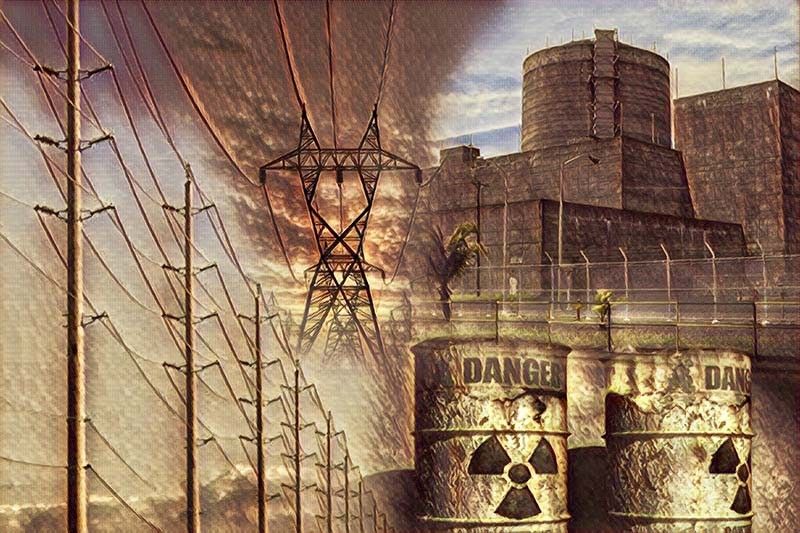
Nowhere to go but up
The country's electricity rates remain one of the highest in Southeast Asia.
Latest available data from the Department of Energy show that the Philippines has the most expensive rates in the region, with P7.49 per kilowatt-hour (kWH) for commercial users and P8.90 kwH for households.
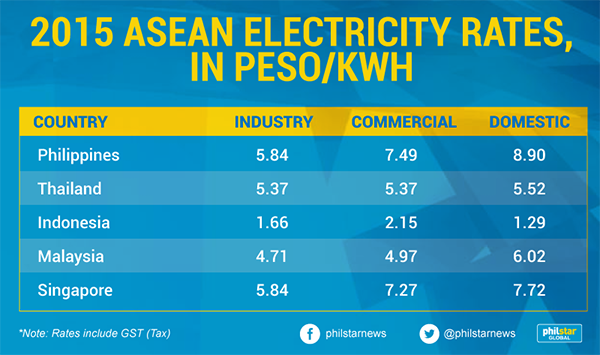
High power rates in the Philippines can be largely attributed to the absence of government subsidies unlike Thailand, Indonesia and Malaysia, the DOE report read.
"In addition, taxes, fees, and other charges are also levied on the power industry sectors composed of the generation, transmission, and distribution levels which constitute a portion on electricity rates in the Philippines,” it added.
High electricity prices are also driven by imported fossil fuels, an analyst said.
The Philippines depends on imports for about 75 percent of its coal supply from neighboring countries such as Indonesia.
“The Philippines is heavily but needlessly over-dependent on coal, which is a losing gamble. The entire nation could be locked into two decades of paying for coal power it may end up not using,” said Institute of Energy Economics and Financial Analysis (IEEFA) energy finance analyst Sara Jane Ahmed.
Despite the financial hazard, almost half (48 percent) of the country's installed electrical capacity is generated using imported fossil fuels in 2016.
The Philippines' current energy policies "pass on the costs of coal risk to consumers who are forced to shoulder higher electricity bills as a result," according to the IEEFA repprt.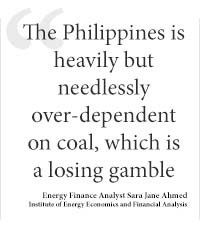
The white elephant
What will it take to convince people that nuclear is good?
The answer, according to PNRI chief Arcilla, lies in answering another important question — how safe is nuclear power?
To address this issue, Arcilla emphasized the need to put forward radioactive waste management for discussion.
"It's not like you're hiding something. The science is good. I know because I am deeply involved in it. And so I'm saying 'why are we not talking about it [nuclear waste disposal]'," Arcilla told reporters on the sidelines of the Atomexpo 2018.
”If we have a nuclear power program in the Philippines, I will recommend to the president that if you license the plant, also start licensing the beginnings of waste disposal at the same time,” he said.
Part of the public opinion worldwide considers the waste generated from nuclear applications, which pose serious risks to health and the environment.
Arcilla, a proven expert in the field of geology, has been involved in nuclear-related research, particularly in the study of nuclear waste disposal for more than a decade.

Philippine Nuclear Research Institute Director Carlo Arcilla discusses the importance of radioactive waste management in developing a nuclear power program for the Philippines. He is among the speakers at the 10th Atomexpo International Forum held in Sochi, Russia. Philstar.com/Kristine Daguno-Bersamina
"It's (nuclear power development) like putting up a mansion without toilets if you're not talking of radioactive waste," he said.
Arcilla, during a round table discussion, proposed to isolate an island for nuclear waste disposal.
“Putting up deep bore holes in an island can be done as we have the expertise to do that,” the PNRI chief said.
After placement in the repository about 600 meters deep in the bedrock, the container would be surrounded by a bentonite clay buffer to provide a very high level of containment of the radioactivity.
Bentonite is a natural geological material that has been stable over timescales of millions of years.
How cheap can it get?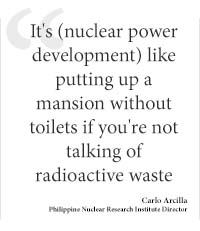
While talks on nuclear safety play a significant role, cost is another big issue for developing nations such as the Philippines.
In 2003, the Masachusetts Institute of Technology (MIT) estimated that the "overnight cost" or the cost of a plant without financing would be US$2,000 per kilowatt. MIT, in their updated study released in 2009, estimated the cost at US$4,000 a kilowatt. Same study found that "since 2003... the estimated cost of constructing a nuclear power plant has increased at a rate of 14 percent per year."
But proponents of nuclear power said that the cost may become more competitive in the long run.
"The greatest weakness of the nuclear industry is the upfront cost which requires stability, both in the government and your suppliers. You'll be putting up huge billion dollar investment, which will be very cheap in the long run, assuming that you have the long run," Arcilla said.
Cost overrun occurs when players interfere with the nuclear power develoment.
"That's why it (nuclear power plant) become very expensive, so that's the risk there," he said.
The construction of the 620-MW Bataan Nuclear Power Plant, which sits atop 3.5-square kilometer government property at Napot Point in Morong Bataan province, overlooking the South China Sea, cost $2.3 billion.
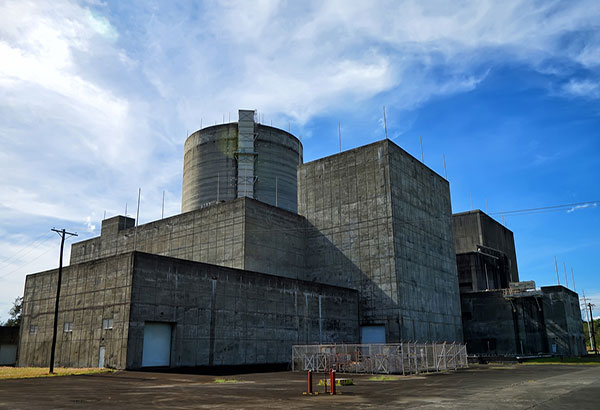
The Bataan Nuclear Power Plant is the only nuclear power plant in the Philippines. It was mothballed in 1986 due to safety concerns in the wake of the meltdown at the Chernobyl power plant in Russia. File photo
The Energy department estimated the cost to revive BNPP at US$1 billion.
Arcilla noted that the Philippines cannot rely on fossil fuel energy sources alone and has to include nuclear power to its energy mix as the Malampaya gas field is expected to dry up by about 2024.
Moreover, possible joint-exploration between the Philippines and China in the gas-rich Reed Bank in the South China Sea is yet to advance.
Renewable energy such as wind and solar, on the other hand, may fluctuate with the weather and time of day, overproducing electricity at times and coming up short at other times.
The PNRI chief said the generation cost of nuclear power is one-tenth that of coal.
“One pellet of uranium is equivalent to one-and-a-half tons of coal. So for the whole 18 months that you power a nuclear power plant, the fuel will fit in my pick-up truck. Equivalent coal will be five ships of 50,000 tons,” he said.
Distribution charge of electric power distribution companies is not yet included in the equation.
Other nuclear option
The Philippines as an archipelagic state could be an advantage in developing a nuclear power program, experts say.
Since the Philippines is composed of many islands, several nuclear options can be considered in providing electricity. One of these is Russia's sea-based floating nuclear power plant (FNPP).
Called "Academik Lomonosov," the plant owned by Rosatom, is considered a breakthrough technology which could provide electricity and heat to areas with difficult access.

Akademik Lomonosov, the unique nuclear floating power unit (FPU), has set sail from the Baltic Shipyard. The unit is en route to its final destination – Pevek, Chukotka (in Russia’s Far East), where it will operate as a floating nuclear power plant. Rosatom/Released
It has two KLT-40S reactor units that can generate up to 70 MW of electric energy and 50 Gcal/hr of heat energy during its normal operation.
In a press statement, Vitaly Trutnev, director of Directorate for the Construction and Operation of Floating Nuclear, Rosatom's subsidiary said that the product is a "significant milestone" for the nuclear industry.
"Building upon three hundreds of reactor-years of safe operation of units powering icebreakers, FNPP features the most cutting edge safety and security systems and is expected to be one of the safest nuclear installations in the world,” he said.
In a press conference at the 10th Atomexpo International Forum, Philstar.com asked about safety procedures for floating nuclear power plants.
Being situated on the Pacific Ring of Fire, the Philippines has to cope with constant risk of volcanic eruptions, earthquakes, typhoons and tsunamis.
Rosatom Director General Alexey Likhachev said that safety is at the very top of their priority when developing "Academik Lomonosov," which followed the standards of the International Atomic Energy Agency (IAEA).
"We were interested most of all into the solidity of the vessel, of reactor of nuclear power plant and therefore, the standards of safety are to withstand the earthquake of magnitude 11, 12... And the same power of tsunami," Likhachev said in Russian.
"Not because we have this sort of tsunami in the Arctic region but because the initial idea was to put this product into international market, including for the intention of such country such as yours (Philippines)," he added.
In 2017, Rosatom and the Energy department signed a memorandum of understanding on cooperation to explore "possibilities for the construction of land-based or floating nuclear power plants equipped with small modular reactors" in the Philippines.
Long way to go
The Philippines, at this time, has a lot of work to do in developing a nuclear power policy.
Besides government commitment, Arcilla noted that there is a need to work on public acceptance, which remains a major challenge to nuclear power.
"If a decision to use nuclear power is done, it will be controversial. It will have to be a political decision and championed by the executive government," the PNRI chief said.
"It is a decision that brings along with it many preparatory milestones involving not only the energy sector but huge swaths of changes in government laws, financing, regulation, environmental concerns and most importantly, social acceptability," he added.
RELATED: 5 myths about Bataan Nuclear Power Plant, debunked
___
Editor's note: The trip to Sochi, Russia was hosted by Rosatom. At no stage does the host organization have a say in the stories generated from the coverage, interviews conducted, publication date and story treatment. Content is produced solely by Philstar.com following editorial guidelines.
- Latest
- Trending































